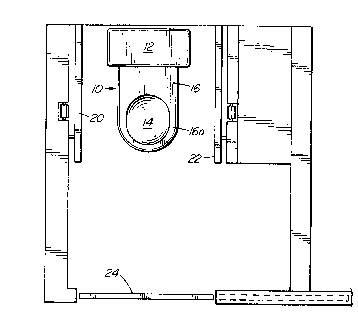Some of the information on this Web page has been provided by external sources. The Government of Canada is not responsible for the accuracy, reliability or currency of the information supplied by external sources. Users wishing to rely upon this information should consult directly with the source of the information. Content provided by external sources is not subject to official languages, privacy and accessibility requirements.
Any discrepancies in the text and image of the Claims and Abstract are due to differing posting times. Text of the Claims and Abstract are posted:
| (12) Patent: | (11) CA 2031350 |
|---|---|
| (54) English Title: | TOILET FOR WHEELCHAIR USERS |
| (54) French Title: | W.-C. ADAPTE AUX BESOINS DES PERSONNES EN FAUTEUIL ROULANT |
| Status: | Expired and beyond the Period of Reversal |
| (51) International Patent Classification (IPC): |
|
|---|---|
| (72) Inventors : |
|
| (73) Owners : |
|
| (71) Applicants : |
|
| (74) Agent: | SMART & BIGGAR LP |
| (74) Associate agent: | |
| (45) Issued: | 1993-03-02 |
| (22) Filed Date: | 1990-12-03 |
| (41) Open to Public Inspection: | 1992-06-04 |
| Examination requested: | 1992-06-11 |
| Availability of licence: | N/A |
| Dedicated to the Public: | N/A |
| (25) Language of filing: | English |
| Patent Cooperation Treaty (PCT): | No |
|---|
| (30) Application Priority Data: | None |
|---|
ABSTRACT OF THE DISCLOSURE
The toilet disclosed makes it possible for a person
confined to a wheelchair independently to move from the
wheelchair to the toilet, without the assistance of a third
party. The configuration of the toilet bowl, including a unitary
seat makes it possible for a person, using adjacent grab bars, to
move from the wheelchair (adjacent and facing the toilet), to a
position on the toilet facing in the direction opposite from that
normally assumed by a person using the toilet.
Note: Claims are shown in the official language in which they were submitted.
Note: Descriptions are shown in the official language in which they were submitted.

2024-08-01:As part of the Next Generation Patents (NGP) transition, the Canadian Patents Database (CPD) now contains a more detailed Event History, which replicates the Event Log of our new back-office solution.
Please note that "Inactive:" events refers to events no longer in use in our new back-office solution.
For a clearer understanding of the status of the application/patent presented on this page, the site Disclaimer , as well as the definitions for Patent , Event History , Maintenance Fee and Payment History should be consulted.
| Description | Date |
|---|---|
| Inactive: IPC from MCD | 2006-03-11 |
| Inactive: IPC from MCD | 2006-03-11 |
| Time Limit for Reversal Expired | 2000-12-04 |
| Letter Sent | 1999-12-03 |
| Inactive: Late MF processed | 1999-04-08 |
| Letter Sent | 1998-12-03 |
| Grant by Issuance | 1993-03-02 |
| Request for Examination Requirements Determined Compliant | 1992-06-11 |
| All Requirements for Examination Determined Compliant | 1992-06-11 |
| Application Published (Open to Public Inspection) | 1992-06-04 |
There is no abandonment history.
| Fee Type | Anniversary Year | Due Date | Paid Date |
|---|---|---|---|
| MF (patent, 7th anniv.) - small | 1997-12-03 | 1997-11-13 | |
| Registration of a document | 1998-10-08 | ||
| Reversal of deemed expiry | 1998-12-03 | 1999-04-08 | |
| MF (patent, 8th anniv.) - small | 1998-12-03 | 1999-04-08 |
Note: Records showing the ownership history in alphabetical order.
| Current Owners on Record |
|---|
| DAYE SHANNON CROSS CANADA TOUR FOUDATION LTD. |
| Past Owners on Record |
|---|
| OSCAR DINELLE |